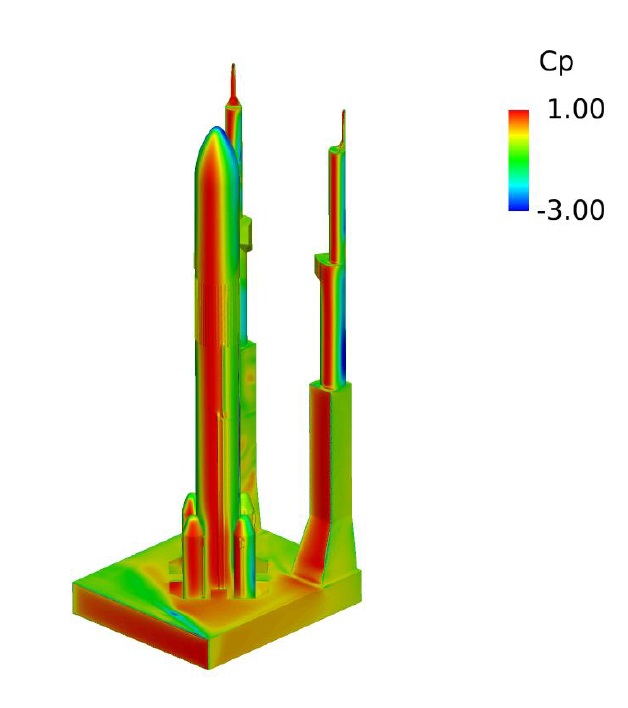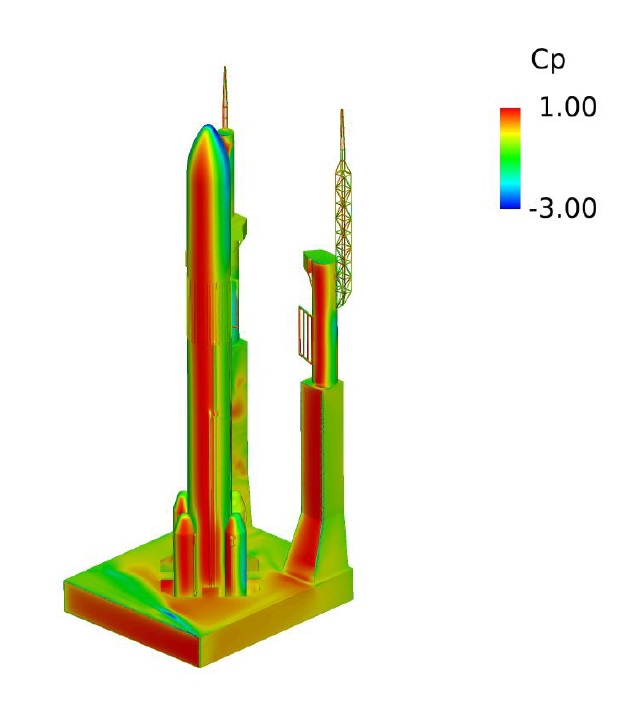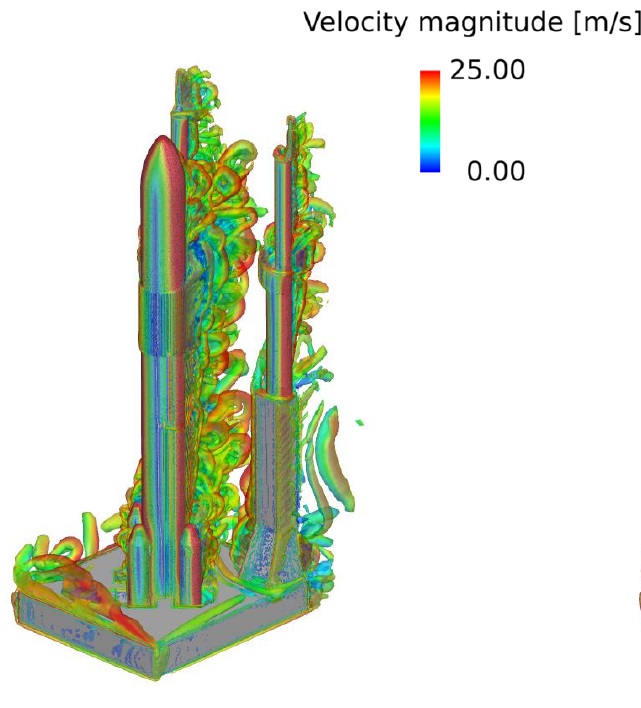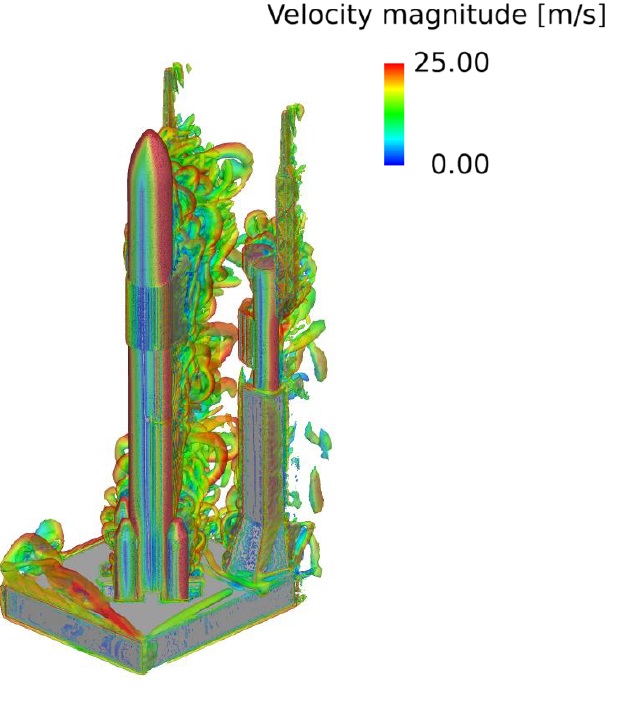Numerical Analysis of aerodynamic characteristics on H3 launch vehicle
JAXA Supercomputer System Annual Report April 2017-March 2018
Report Number: R17EK2300
Subject Category: Space Technology
- Responsible Representative: Masashi Okada, Space Technology Directorate 1, H3 Projcet Team
- Contact Information: Hiroshi Ikaida ikaida.hiroshi@jaxa.jp
- Members: Hiroshi Ikaida, Kazuhiro Imai, Fumihiro Itoo
Abstract
From the viewpoint of international competitiveness, develop a new launch system with low cost and high performance.
Reference URL
N/A
Reasons for using JSS2
Aerodynamic data and load analysis resuls are necessary to confirm the feasibility in the H3 launch vehicle critical design phase. Therefore, we obtain aerodynamic characteristic data by CFD using JSS2.
In the past, aerodynamical development was dependet on databases, but due to technological innovation, highly reliable caluculation using CFD became possible. Consequently, computational approch is applied in this project.
Achievements of the Year
Under the ground wind environment at launch site, it is confirmed by the wind tunnel test that the variable air force acting on the aircraft is affected by the launch facility due to the wind direction. Based on these wind test results, design work for improving wind resistance is underway. Because of the progress of detailed design, due to the change of the mast shape and the addition of the mast attachment, the unsteady CFD analysis was carried out and the influence on H3 rocket variable air force was confirmed.
As an analysis case, we conducted seven cases of three-dimensional CFD and eight cases of semi-two-dimensional analysis using wind direction / mast shape as a parameter. From the unsteady pressure fluctuation data, fluctuating aerodynamic force at the time of change of shape / wind direction was acquired and its influence was evaluated.
Publications
N/A
Usage of JSS2
Computational Information
- Process Parallelization Methods: MPI
- Thread Parallelization Methods: Automatic Parallelizatio
- Number of Processes: 960
- Elapsed Time per Case: 170.00 hours
Resources Used
Fraction of Usage in Total Resources*1(%): 1.50
Details
Please refer to System Configuration of JSS2 for the system configuration and major specifications of JSS2.
| System Name | Amount of Core Time(core x hours) | Fraction of Usage*2(%) |
|---|---|---|
| SORA-MA | 12,599,432.26 | 1.67 |
| SORA-PP | 18,825.57 | 0.24 |
| SORA-LM | 0.00 | 0.00 |
| SORA-TPP | 0.00 | 0.00 |
| File System Name | Storage Assigned(GiB) | Fraction of Usage*2(%) |
|---|---|---|
| /home | 254.63 | 0.18 |
| /data | 6,978.99 | 0.13 |
| /ltmp | 4,296.88 | 0.32 |
| Archiver Name | Storage Used(TiB) | Fraction of Usage*2(%) |
|---|---|---|
| J-SPACE | 0.50 | 0.02 |
*1: Fraction of Usage in Total Resources: Weighted average of three resource types (Computing, File System, and Archiver).
*2: Fraction of Usage:Percentage of usage relative to each resource used in one year.
JAXA Supercomputer System Annual Report April 2017-March 2018






